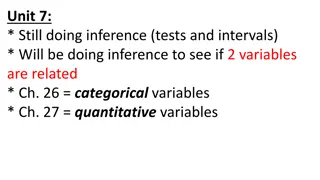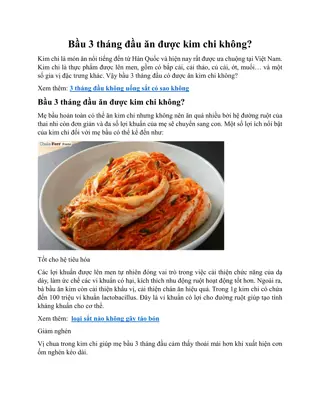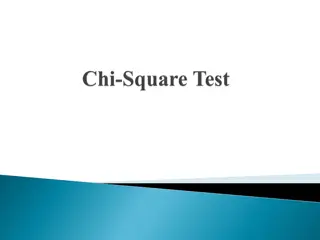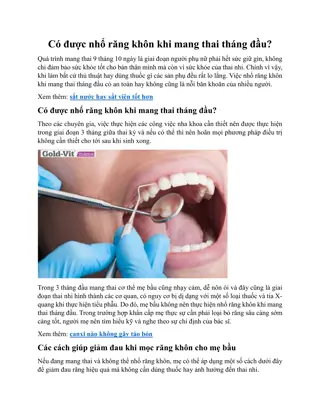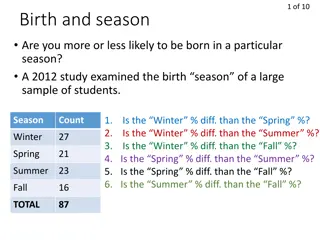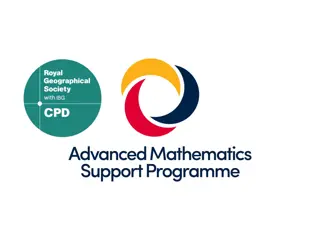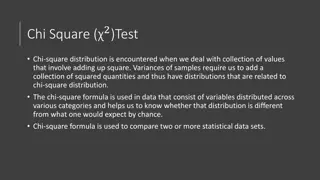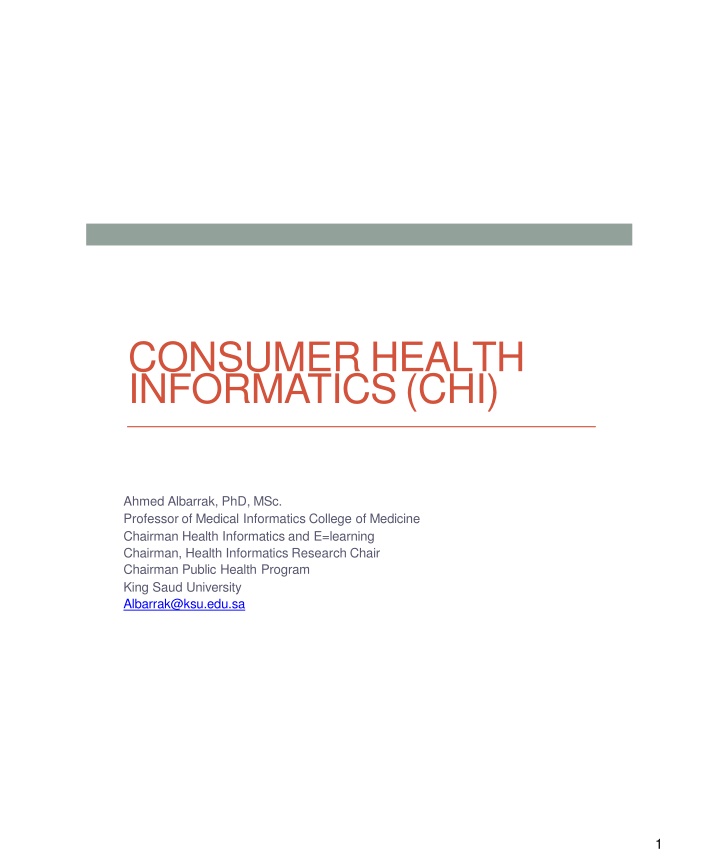
Consumer Health Informatics and Empowered Consumers
Consumer Health Informatics (CHI) focuses on analyzing consumer information needs, making health information accessible, and integrating consumer preferences into healthcare systems. It stands at the intersection of various disciplines and emphasizes the empowerment of consumers for effective self-health actions. This evolving field shifts the focus from health professionals to consumers, encompassing a diverse group beyond patients. Empowerment in consumer health involves granting power to individuals for self-determination and control over their health and lives.
Download Presentation

Please find below an Image/Link to download the presentation.
The content on the website is provided AS IS for your information and personal use only. It may not be sold, licensed, or shared on other websites without obtaining consent from the author. If you encounter any issues during the download, it is possible that the publisher has removed the file from their server.
You are allowed to download the files provided on this website for personal or commercial use, subject to the condition that they are used lawfully. All files are the property of their respective owners.
The content on the website is provided AS IS for your information and personal use only. It may not be sold, licensed, or shared on other websites without obtaining consent from the author.
E N D
Presentation Transcript
CONSUMER HEALTH INFORMATICS(CHI) Ahmed Albarrak, PhD, MSc. Professor of Medical Informatics College of Medicine Chairman Health Informatics and E=learning Chairman, Health Informatics Research Chair Chairman Public Health Program King Saud University Albarrak@ksu.edu.sa 1
Whatis ConsumerHealthInformatics? A branch of health informaticsthat: Analyzes information needs of consumers Studies and implements methods of making health information and services accessible to consumers Integrates consumer preferences into health care information systems 2
In this view, informatics analyzes consumers' needs for information; studies and implements methods for making information and services accessible to consumers; and models and integrates consumers' preferences into health information systems. Consumer informatics stands at the crossroads of other disciplines, such as nursing informatics, public health, health promotion, health education, library science, and communication science. 3
Consumer HealthInformatics Integration of consumer health information and information technology in an environment of shared healthcare decision-making that supports effective self-health action. Lewis, D. & Friedman, C. (2002). Consumer health informatics. In M.J. Ball, K.J.Hannah, S.K. Newbold, & J.V.Douglas (Eds.). Nursing informatics: Where caring and technology meet(3rd ed.). New York; Springer-Verlag. 4
Consumers? More broader than patient it may include the well and caregivers It is a very diverse group Brennan&Safran.Chapter 2 Empowered consumers. In: Lewis, Eysenbach, Kukafka, Stavri, Jimison. Consumer HealthInformatics Springer,2005 5
Thefocusoftraditionalhealthcareandmedicalinformatics isshiftingfromhealthprofessionalstoconsumers 6
EmpoweredConsumers Empowerment: Granting of power to a dependent group or enhancing an individual's ability for self determination a social process of recognizing, promoting and enhancing people abilities to meet their own needs, to solve their own problems, and mobilize the necessary resources in order to feel in control of their lives (Gibson, 1991) Brennan&Safran.Chapter 2 Empowered consumers. In: Lewis, Eysenbach, Kukafka, Stavri, Jimison. Consumer HealthInformatics Springer,2005 7
EmpoweringConsumers Consumers Health Informatics applications support the empowered consumers concept (a power balance in the patient-health professional relationship) by e.g.: Providing Informing about health concerns Assisting in finding others with similar concerns Assisting in navigating the health care system and services Access to clinical records and personal care management tools. 8
History ofCHI Consumer movement of 1970s Increased demand for information Greater participation in medical decisionmaking Prominence of self-help phenomenon of1980s Huge increase in health information for lay audience Widespread use of the Internet Increased dramatically throughout1990s 1 0
CHIContinuum Give/receivesupport Obtain education/ information/treatment Communicatewith Access to personal providers medicalinformation Provideinformation Degree of ConsumerAutonomy 11
1 2
1 3
1 4
1 5
https://youtu.be/8BKN7RFhdq4 patient centeredcare http://www.internetworldstats.com/me /sa.htm 1 6
SaudiArabia: InternetGrowthandPopulation Statistics http://www.internetworldstats.com/me /sa.htm 1 7
Mobilehealth M-health or Mobile health is a term used for the practice of medicine and public health, supported by mobile devices. The term is mainly used in reference to using mobile communication devices, such as mobile phones, tablets and PDAs, for health services and information. The mobile Health is a sub-segment of eHealth, The mHealth market earned revenues of $230 million in 2010 and is estimated to reach $392 million in 2015 in USA, according to a new report from research firm Frost & Sullivan. 1 8
mHealth MobileisthemostPervasivetechnologyeverinvented 1 9
The mHealthOpportunity 7 Billion People By 2014 More mobile phones than people Expanding the coverage and reach of critical health information andservices and moving towards citizen-centered health and well-being 2 0
Consumer HealthInformatics Consumer Health Informatics consumer or patient views. patient-focused informatics, health literacy and consumer education. health information literacy, consumer-friendly language, personal health records, and Internet-based strategies and resources. 2 1
WhereclinicalIS andConsumerhealth informaticsmeet Patient Portals: Patient interface to clinical information systems Personal Health Record: Internet based- set of tools that allows people to access and coordinate their life-long health information and make appropriate parts of it available to those who need it http://ww.webcitation.org 2 2
2 3
2 4
2 5
2 6
2 7
2 8
Consumer Health InformaticsSystems Consumer health informatics can be organized into three general systems that: provide health information to the user (one-way communication) tailor specific information to the user s unique situation (customized communication) allow the user to communicate and interact with health care providers or other users (two-way communication) 2 9
Consumer Health InformaticsSystems One-way communication: CD-ROMs, on-line health articles Tailor: automated systems that obtain information from the consumer about his or her general health or other health-related factors (such as family disease histories and smoking habits) and, on the basis of this information, suggest a need for preventive health procedures (such as mammograms), or identify actions to curb high-risk behaviors. Two-way communication: electronic mail, electronic bulletin boards, on-line discussion groups. 3 0
Rolesof Health Professionals in CHI Professionals serve as sources of content Professionals provide important guidance in moderating public electronic discussion groups and responding to patients electronicmessages Clinicians become information brokers and interpreters for patients. 3 1
Quality control of healthinformation on theinternet The quality control of health information on the internet rests on four pillars: educating the consumer encouraging the self regulation of providers of health information having third parties evaluate theinformation enforcing consents in cases of disseminationof fraudulent or harmfulinformation. 3 2
CredibilityCriteria The FA4CT Algorithm: A New Model and Tool for Consumers to Assess and Filter Health Information on the Internet CREDIBLE Criterion Current and frequently updated Referencecited Explicit purpose Disclosure of sponsors Interest disclosed and no conflicts found (e.g financial) Balanced Level of Evidence Eysenbach G, Thomson M. The FA4CT Algorithm: A New Model and Tool for Consumers to Assess and Filter Health Information on the Internet. In: Kuhn K (ed.) Medinfo 2007 Proceedings (in press) 3 3
Patient CentricHealthcare care that is respectful of, and responsive to, individual patient preferences, needs, and values and that ensures that patient values guide all clinical decisions. This definition highlights the importance of clinicians and patients working together to produce the best outcomes possible. Crossing the Quality Chasm, IOM 3 4
Patient / PeopleEngagement WHO defines People Centered Care as: Care that is focused & organized around the health needs & expectations of people & communities rather than on disease 3 5
Characteristics of PatientCentered Care Respect for patients values, preferences & needs Coordinated and integrated care Information, Communication & Education Physical Comfort Emotional Support Involvement of family & friends Continuity of care Access to care Picker Institute-Multiyear Research Project Through the Patient s Eyes: Understanding and Promoting Patient-Centered Care 3 6
Its a Different Ballgame In an eHealth environment, Information Moves rather than the Physician or the Patient eHealth ePhysician - eConsumer ! 3 7
Is At the Point of Care TooLate? Health care spending Health Status Early High Risk Clinical Healthy / Low Risk At Risk Sympto ms 20% of people generate 80% of costs -Early detection of at-risk patients -Provide personalized evidence to enable pro- active decisions 3 8
Actions Technology victories and chronic disease, e-Health takes a prominent role in the management of healthcare To aggregate rather than segregate healthcare system Consumer health education and empowerment Preventive medicine takes precedence over treating the sick Focus on vulnerable members of society The European study for future ofhealth 3 9
FurtherReading 4 0
4 1
The Future:Trends Is forConsumer Health Informatics Thank you Prof AhmedAlbarrak 4 3




